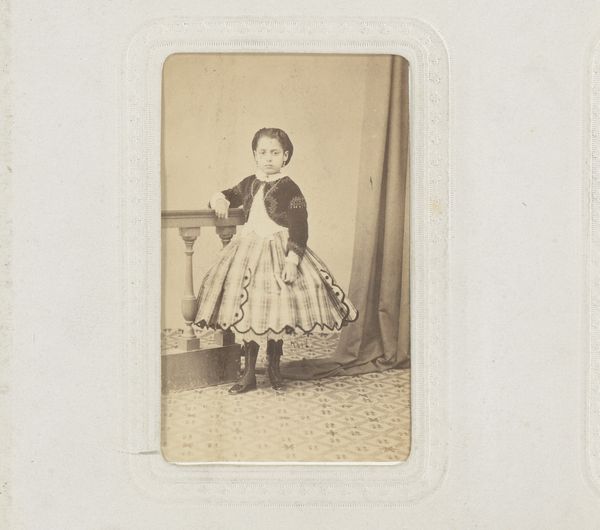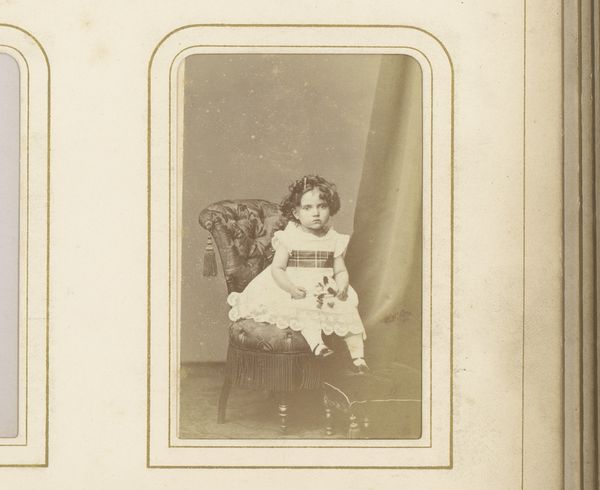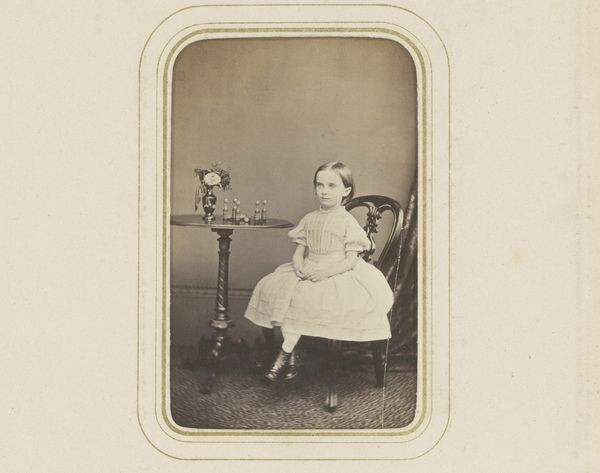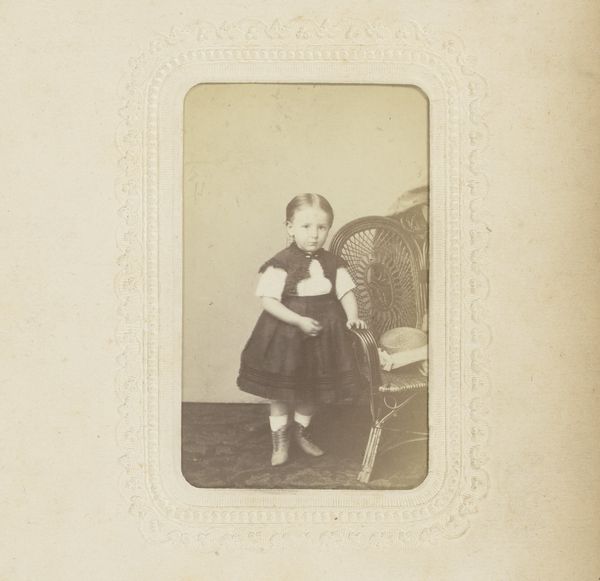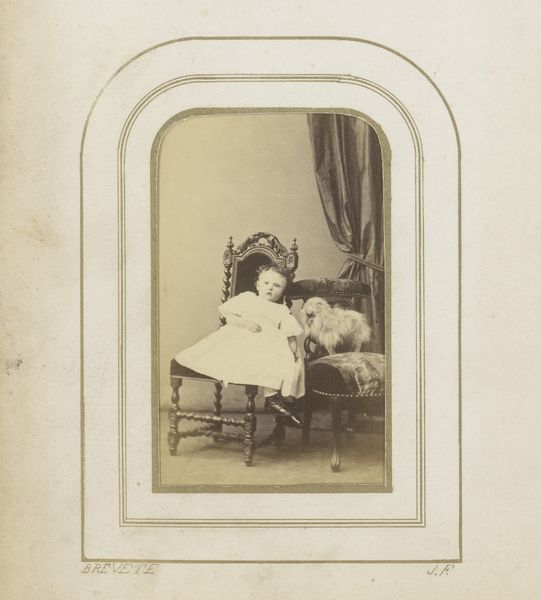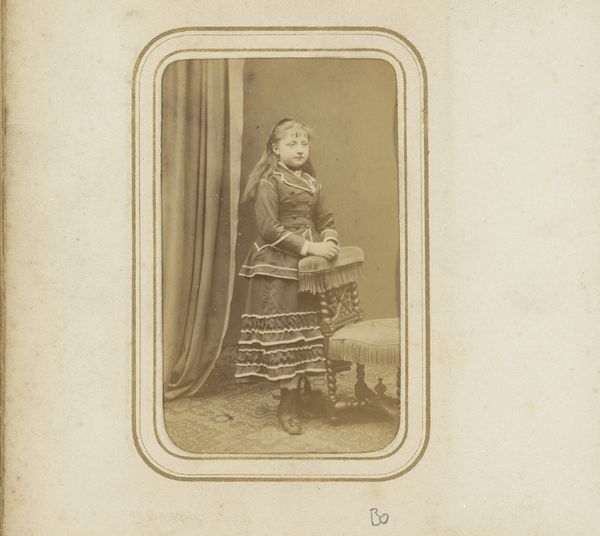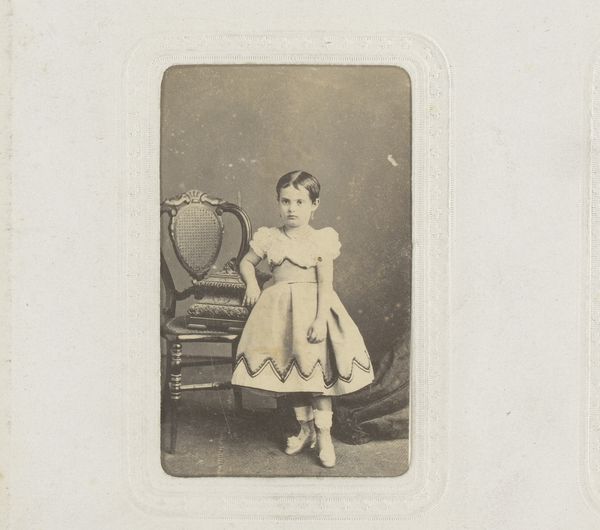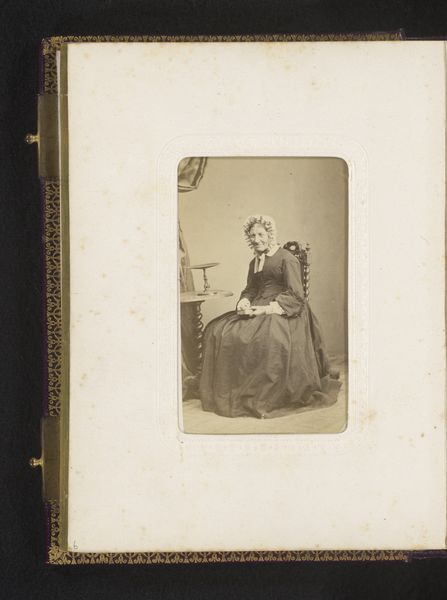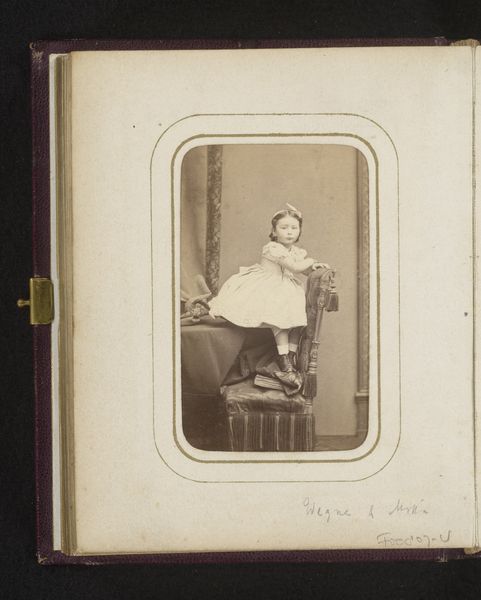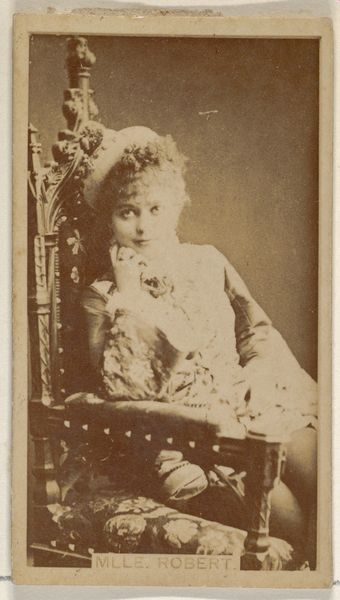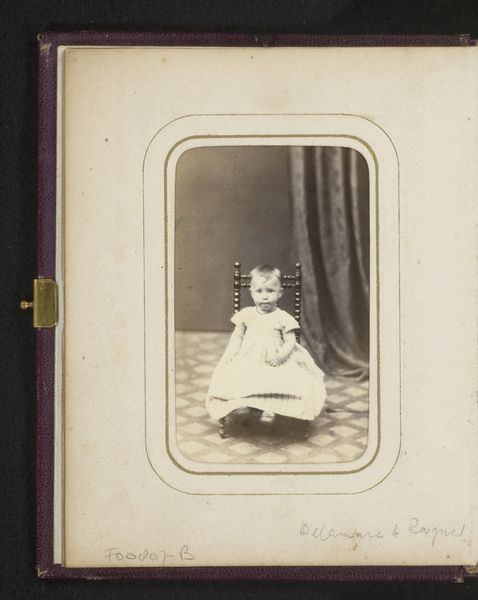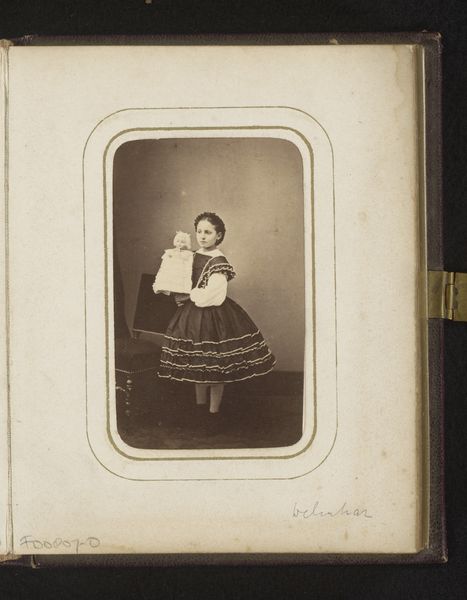
Portret van een zittende oude vrouw met muts en waaier in de hand 1860 - 1900
0:00
0:00
photography
#
portrait
#
16_19th-century
#
photography
#
historical photography
#
19th century
Dimensions: height 84 mm, width 53 mm
Copyright: Rijks Museum: Open Domain
Curator: What a captivating piece of historical photography! This is "Portret van een zittende oude vrouw met muts en waaier in de hand," placing it sometime between 1860 and 1900, created by Francisco Sargent. Editor: The sepia tones evoke a strong sense of melancholy. The sitter appears confined by both her attire and the composition; that large lace collar feels almost like a cage. Curator: Indeed. Contextually, we see studio photography gaining traction, becoming accessible to a burgeoning middle class. Consider the social implications: Who was this woman? What did such portraits mean to her, to her family, within a society that meticulously codified age, gender, and status? Editor: There is such an interesting intersectionality, then, right? Because the elaborate head covering speaks to perhaps her religious devotion or societal expectations around modesty and aging, but she also holds that fan with a hint of what could be seen as worldliness. A dialogue, maybe, about navigating those contrasting expectations. Curator: Absolutely. And that fan wasn't simply an accessory. In the Victorian era, it was practically another language, offering subtle communication, often used by women. Consider also the studio setup, the posed stillness – the power dynamic inherent in these carefully constructed photographic portraits. The artist capturing this likeness but also participating in reinforcing particular norms. Editor: And how different those norms would be for women based on race and class. We're viewing privilege here, even within what may seem like a sorrowful image. It's about representation, about who gets to be seen, remembered, idealized – and how. It sparks questions of historical erasure for me; for every face documented, so many others remain unseen and unheard. Curator: Precisely. By delving into the power structures interwoven with visual culture of that era, it allows us to investigate our contemporary relationship with images, the internet, the idea of self, or "selves," perpetuated or subverted today. Editor: It really brings into focus how much visual rhetoric from the 19th century informs our understanding and assumptions even now. There’s a continuous, evolving discourse to explore. Curator: It does; it reveals the through lines of identity and representation that extend into the 21st century. Editor: Agreed. A single photo holding a complex history and so much potential for contemporary conversation.
Comments
No comments
Be the first to comment and join the conversation on the ultimate creative platform.
